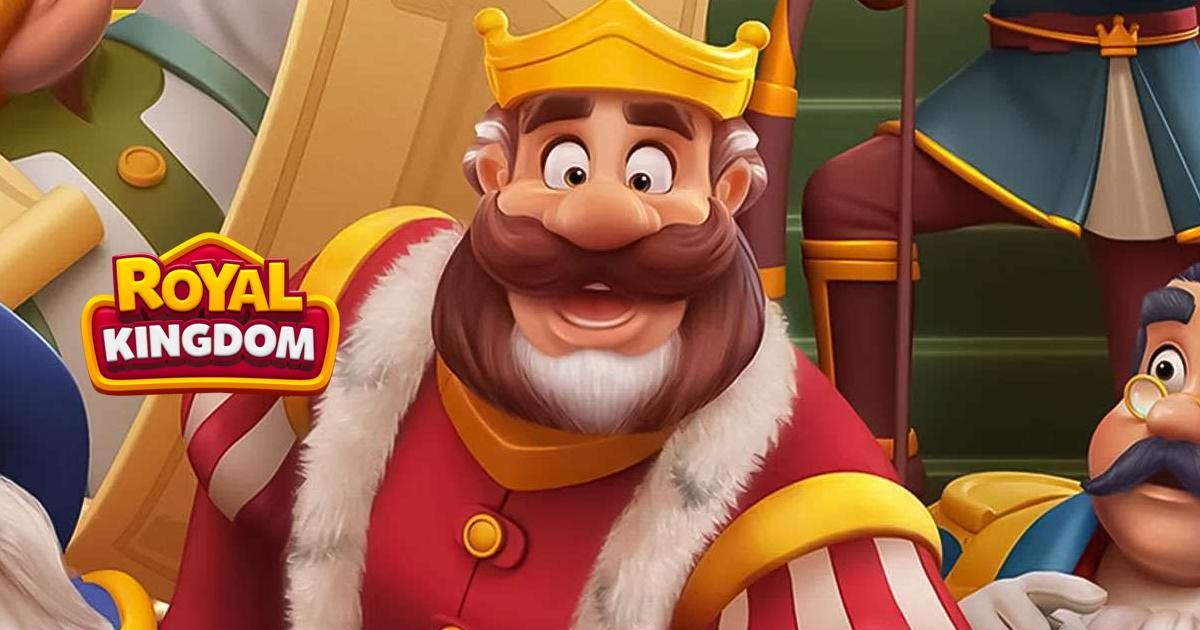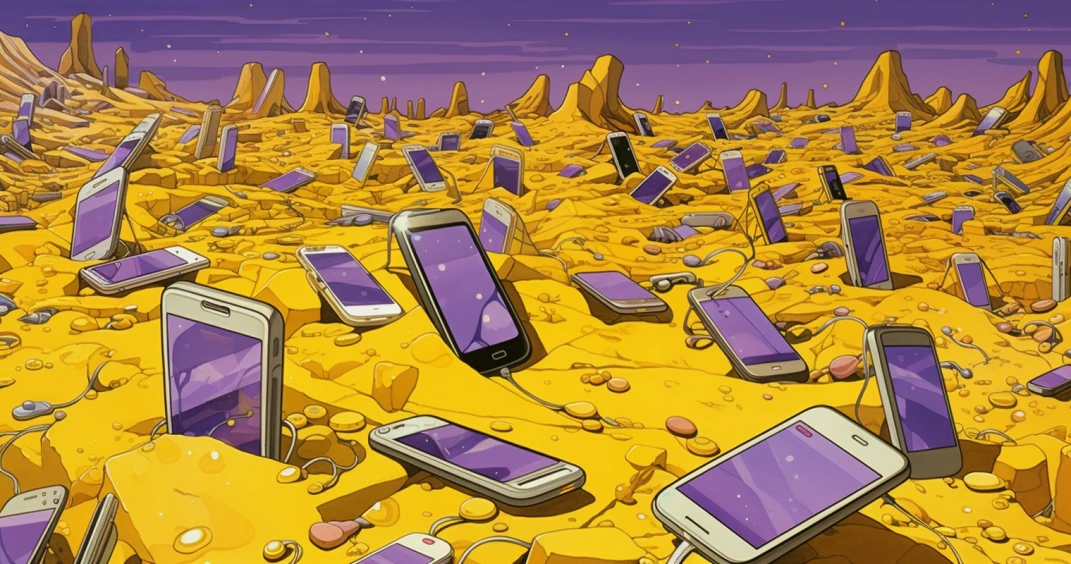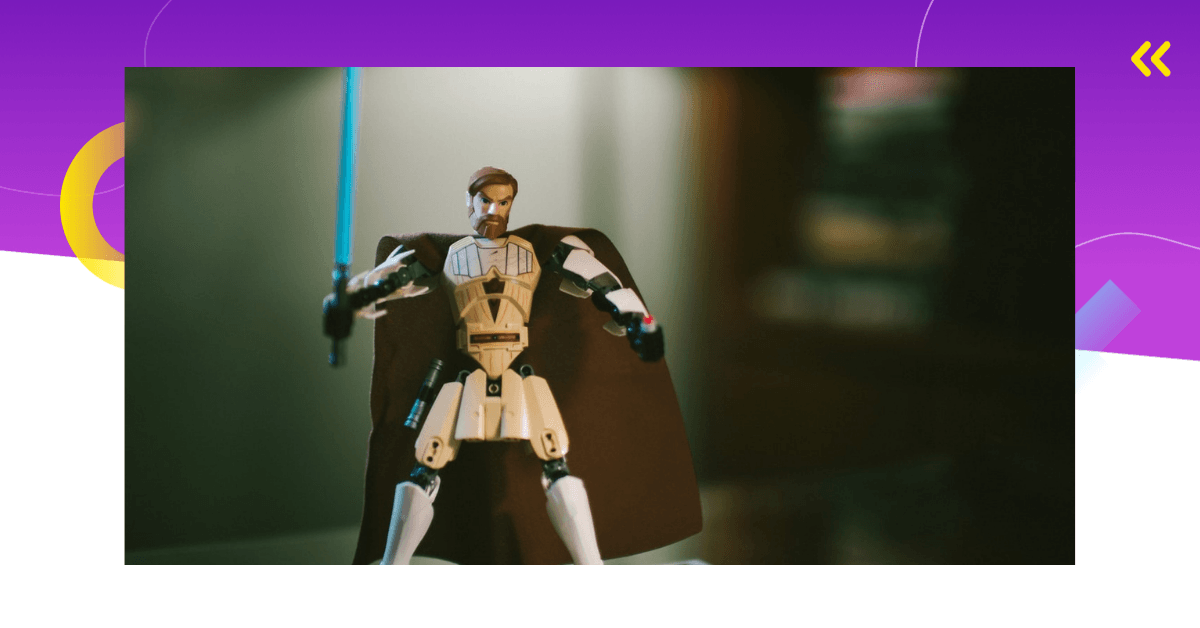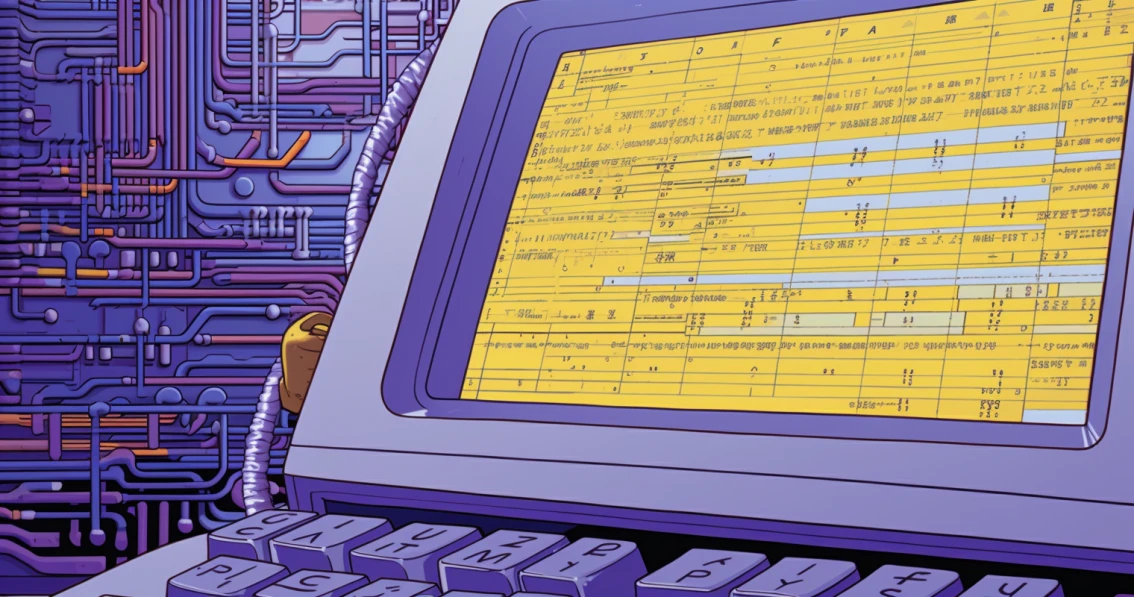You’ve probably seen the ads everywhere – on TikTok, Instagram, maybe even while playing other mobile games. Royal Kingdom is all over the place, and it’s not just noise. It’s topping the charts, pulling in serious revenue, and actually keeping players around. In a space packed with match-3 games, that’s no small feat.
But what exactly is driving this success?
That’s what we’re breaking down here – from the gameplay and monetization to its relentless ad strategy and player retention. Whether you’re part of a dev team, working in UA, or just curious why this game keeps showing up in your feed, we’ll walk you through what’s going on under the hood.
We’ll also pull in real performance data to back things up – downloads, revenue, retention rates, and more
Let’s start at the beginning: what even is Royal Kingdom?
What Is Royal Kingdom?
At its core, Royal Kingdom is a match-3 puzzle game – but with a few twists that set it apart from the crowd.
You swipe tiles to match colors, clear obstacles, and complete level objectives. Sounds familiar, right? It should. This formula is wildly popular for a reason. But Royal Kingdom mixes it with a light narrative layer and kingdom-building elements, giving players a sense of progress that goes beyond just beating levels.
As you complete puzzles, you unlock new areas of your kingdom, decorate them, and sometimes interact with quirky characters along the way. It’s the same kind of progression loop that’s made games like Homescapes and Royal Match so sticky, but with its own visual flair and structure.
It’s easy to play, visually polished, and full of small dopamine hits. And like any successful casual game, it’s designed to be snackable – you can jump in for five minutes, pass a level or two, and feel like you’ve made progress.
It’s available on both iOS and Android, and from what we’ve seen, it’s pulling in millions of players globally. But who’s behind it?

Who Owns Royal Kingdom?
Royal Kingdom was developed and published by Dream Games, the same studio behind Royal Match. Founded in 2019, Dream Games might be relatively new, but they’ve quickly made a name for themselves in the mobile puzzle genre.
With Royal Match, they proved they could dominate the charts. Royal Kingdom takes that same high production value, polished gameplay, and proven monetization strategy – and builds on it. From the UI to the animations, everything about the game feels refined. You can tell it’s made by a team that understands how to make a casual game that sticks.
This isn’t a one-hit-wonder studio. Dream Games is clearly aiming to build a long-term portfolio of top-tier mobile titles, and Royal Kingdom is their next big move.
When Did Royal Kingdom Come Out?
Royal Kingdom officially launched worldwide on November 21, 2024, after spending more than a year in soft launch. That early access phase kicked off in April 2023 and gave the team plenty of time to test features, tweak progression, and refine monetization before going global.
And it paid off.
By the time it launched, the game had already pulled in over $20 million in revenue, just from a few English-speaking markets like the UK, Canada, and Australia. Within its first few months post-launch, that number skyrocketed. By early 2025, Royal Kingdom had already passed $50 million in total player spending.
It didn’t stop there. In April 2025 alone, the game made over $20 million, and by May it had crossed the $100 million mark. Safe to say, Dream Games had another hit on their hands.
The global launch wasn’t just a formality – it was a calculated move backed by real performance data. And it set the stage for Royal Kingdom to grow fast, with a refined game and a massive user acquisition push ready to go.

What Is the Difference Between Royal Match and Royal Kingdom?
At first glance, Royal Kingdom and Royal Match look pretty similar – they’re both polished match-3 puzzle games with vibrant visuals, over-the-top animations, and that same satisfying “pop” when you clear tiles. But once you spend some time with both, the differences start to show.
The biggest one? Tone and narrative structure.
Royal Match is built around helping King Robert redecorate his castle in a lighthearted, almost goofy way. It’s cozy, colorful, and doesn’t take itself too seriously. Royal Kingdom, on the other hand, leans more into fantasy and conflict. You’re not just matching tiles to fix up a palace – you’re restoring a kingdom, facing down villains, and completing “attack” levels against the Dark King’s forces.
It’s a subtle shift, but it gives the game a bit more tension and story progression. It’s perfect for those looking for games like Royal Match.
Different Level Design
There are also differences in how the levels are designed. While both use goal-based puzzles with obstacles and power-ups, Royal Kingdom feels more structured around long-term progression. It emphasizes unlocking new regions and characters in a more linear, narrative-driven way. It’s less sandbox, more storybook.
Visually, the art style is still bright and appealing, but Royal Kingdom goes for a more regal, epic fantasy look – a little less cartoonish, a little more serious. Think enchanted forests and royal courts instead of garden parties and balloon animals.
But maybe the most important difference is strategic: Royal Kingdom is clearly built to ride the success of Royal Match, but it’s not just a clone. Dream Games took what worked, added a fresh layer of story and structure, and created something that feels familiar but new. It’s a smart way to expand their audience without alienating fans of the original.

How Many Levels Are in Royal Kingdom?
Since its release, Royal Kingdom has expanded rapidly, and that’s a key reason players stick around.
- At launch on November 21, 2024, the game launched with hundreds of levels.
- By December 2024, it had surpassed 1,100 levels, and by April 2025, it had grown to over 1,200 levels, and content keeps dropping every two weeks.
- That regular biweekly level update cadence keeps the game fresh, giving players a steady stream of new challenges and giving retention a boost.
That pace matters more than you might think. Frequent updates encourage re-engagement, give players something new to look forward to, and stretch the game’s longevity. As a developer, you can see how consistency becomes a retention anchor.
How to Play Royal Kingdom
At its heart, Royal Kingdom is a match-3 puzzle game, and it follows the classic formula that’s worked for years: swap adjacent tiles to create matches of three or more, clear obstacles, and complete level-specific goals.
But there’s more going on under the surface.
Each level gives you a limited number of moves and a set of objectives, like clearing jelly, collecting gems, or removing blockers. You’ll also run into new mechanics as you progress, such as chained tiles, bombs, and multi-layered obstacles. These keep things interesting and gradually increase the challenge.
The game introduces these elements gradually, with a solid onboarding flow that eases you in. Early levels are simple and generous, giving you lots of power-ups and frequent wins to get hooked. Then it starts tightening the screws – just enough to keep you engaged without feeling unfair.

Story-Driven
What really sets Royal Kingdom apart is its narrative layer. As you beat levels, you unlock new areas of your kingdom, meet characters, and push forward a light fantasy story. There are even occasional “attack” levels where you take on the Dark King’s minions, adding some variety to the standard match-3 rhythm.
You don’t need to be a hardcore puzzle gamer to enjoy it. That’s the point. The controls are simple, the feedback is satisfying, and the reward loop is tight. It’s designed to be easy to pick up, hard to put down – and based on the numbers, it’s doing a great job of that.
Royal Kingdom Downloads and Revenue
Royal Kingdom has been a massive success on both fronts – installs and player spending.
Since launch, the game has racked up 55 million downloads across iOS and Android.
That kind of reach doesn’t happen by accident. It’s the result of a massive user acquisition push combined with a sticky gameplay loop that keeps people around once they install.
And it’s not just being downloaded – it’s earning.
To date, Royal Kingdom has generated $145 million in revenue.
That’s not just impressive – it’s elite territory for a match-3 game that launched less than a year ago. And considering it doesn’t rely on forced ads, that number is driven almost entirely by in-app purchases. Which means the monetization design is doing its job.
Where the Growth Is Coming From
The U.S. has been the top contributor to revenue, followed by major English-speaking markets like the UK, Canada, and Australia. This lines up with the game’s early soft launch strategy and the types of creatives used in its ad campaigns.
The download-to-revenue ratio also tells us something important: Royal Kingdom isn’t just scaling – it’s converting.
Paid vs. Organic Breakdown
While it’s pulling organic traffic thanks to strong chart placement and word-of-mouth, most of Royal Kingdom’s growth is still being driven by paid acquisition. But that’s not a weakness – it’s a calculated strategy. The game’s monetization, retention, and UA all work together to make sure those paid installs pay off over time.

How Does Royal Kingdom Make Money?
Royal Kingdom uses a classic free-to-play monetization model, but with polished execution and smart timing. Everything in the game is designed to create friction, then offer you ways to smooth it out, usually with a small purchase.
In-App Purchases (IAPs)
The main source of revenue comes from in-app purchases. These include:
- Boosters: Tools like rockets, bombs, and power-ups that help you clear tough levels.
- Lives: Players only get a limited number of attempts before they have to wait – or pay – to keep playing.
- Coins and packs: The in-game currency can be spent on retries, extra moves, or more power-ups.
- Special offers: Limited-time bundles, starter packs, and streak-based rewards make spending feel timely and valuable.
Royal Kingdom does a great job of making these purchases feel optional but tempting. The game often lets you get very close to beating a level before falling short by one or two moves, then offers a cheap way to keep going. That “just one more try” feeling is incredibly powerful.
Events and Time-Limited Features
The game also runs recurring events that introduce new mechanics, cosmetics, or rewards for completing certain tasks. These are often paired with exclusive offers in the shop. You’ll see bundles tied to holiday themes, event challenges, or leaderboard competitions.
This gives players an incentive to spend, not just to win a level, but to win now, before the event ends.
No Forced Ads
One thing that stands out: there are no forced ads in Royal Kingdom. You won’t see interstitials between levels or surprise video pop-ups. Instead, the game focuses entirely on IAPs, which aligns with its premium, polished feel.
That said, there are rewarded ads available in some contexts, like earning extra coins or lives, but these are opt-in and don’t interrupt the core experience.
Long-Term Spend Encouragement
As you progress through the game, the difficulty ramps up gradually, and so does the monetization pressure. But it never feels pushy. Royal Kingdom gives you plenty of early wins, hooks you with satisfying progression, and slowly introduces more reasons to spend as the levels get harder.
There’s also a win streak mechanic that rewards consecutive victories – something players don’t want to lose. If you’re about to break your streak, that $0.99 offer to keep going feels like a small price to pay.
Retention, DAU, MAU, and Long-Term Engagement
Royal Kingdom isn’t just being downloaded – it’s being played. A lot.
Let’s start with the daily and monthly engagement:
- DAU (Daily Active Users): 913,606
- MAU (Monthly Active Users): 2,789,284
- That puts the DAU/MAU ratio at around 32.8%, which is solid. It shows that about a third of monthly players come back on any given day – pretty healthy for a puzzle game.
Retention Breakdown
Now onto retention. Here’s how it looks:
- Day 1: 38.3%
- Day 7: 19.2%
- Day 14: 13.1%
- Day 30: 9.5%
- Day 60: 7.8%
- Day 90: 6.4%
- Day 180: 3.8%
- Day 365: 1.2%
These are strong numbers for a casual game. Nearly 40% of players return the day after install, and almost 10% are still active a month later. That’s a solid long tail, especially when you consider that monetization ramps up over time. Even a 1.2% retention at day 365 translates into hundreds of thousands of loyal users with potential for recurring spend.
Session Behavior
- Average session length: 16.7 minutes
- Average sessions per user per day: 4.35
This is where Royal Kingdom really shines. Players aren’t just checking in – they’re sticking around. With over 16 minutes per session and more than four sessions per day, it’s clear the game is delivering that “just one more level” feeling that keeps people coming back.
ARPDAU
Royal Match has $0.15 average ARPDAU.
This means that for every daily active user, the game is pulling in 15 cents – again, very healthy for a puzzle game, especially one that doesn’t rely on ads.

Royal Kingdom Advertising and User Acquisition
Royal Kingdom didn’t quietly sneak onto the charts – it stormed in with one of the most aggressive ad campaigns in mobile gaming.
Before the global launch, the game was already running more than 10,000 ad creatives across over 28 countries. At its peak, it was pushing out 500+ new creatives per day, the majority in video format. Meta and Google made up the bulk of distribution, with TikTok and YouTube also playing big roles.
This wasn’t a small test. It was a full-on saturation strategy – and it worked.
Why Is Royal Kingdom Advertised So Much?
Because Dream Games went all-in on visibility, variety, and volume. They didn’t bet on one concept or a few ads – they launched hundreds at a time. Some showed puzzle gameplay, others leaned into emotional stories, and many followed the now-famous “fake gameplay” trend.
You know the type – timed traps, rescue missions, absurd failures. It’s not what the game actually plays like, but it grabs attention. And that’s the whole point. The ad drives curiosity. The game handles the retention.
The goal wasn’t just installs – it was dominance. And when you have the budget and backend to support it, this kind of brute-force ad strategy becomes a competitive advantage.

How Does Royal Kingdom Afford Celebrities?
Because it prints money.
With a monetization model built around high ARPU, no forced ads, and frequent content updates, Royal Kingdom brings in enough revenue to justify major ad spend. And that includes spending big on A-list celebrities.
We’re talking names like LeBron James, Shakira, Jimmy Fallon, Kaley Cuoco, Kevin Hart, and more. LeBron reportedly earned around $4 million for his spot. Shakira and Fallon? Around $1 million each. These aren’t TikTok influencers – they’re global stars, used in high-production ad spots that feel like movie trailers more than mobile game ads.
It’s a bold move, but one that brings major returns. Celebrity campaigns helped Royal Kingdom generate millions in pre-registrations and post-launch spikes in installs and revenue.
How Does Royal Kingdom Get Celebrities?
Dream Games partnered with top-tier creative agencies and directors to build out this campaign. These weren’t one-offs – they were full productions, often built to run across TV, YouTube, and even live sports broadcasts.
It was about creating cultural relevance. These campaigns helped push Royal Kingdom beyond the gaming audience and into mainstream awareness.

Why Is Royal Kingdom Not Like the Ads?
Let’s be honest: some of the ads are pure fantasy.
The fake gameplay trend is everywhere in mobile gaming, and Royal Kingdom leans into it hard. The game itself doesn’t feature timed rescue levels or high-stakes escape rooms. But the ads do, because they get people to click.
And while that might frustrate a few players, the vast majority stay because the core loop delivers. The gameplay is polished, the progression feels rewarding, and the monetization doesn’t hit too hard too fast. Once they’re in, most players stick around – and that’s what makes the strategy work.
The Strategy Behind It All
Dream Games didn’t just throw money at ads. They built a layered, full-funnel UA machine.
- Wide-scale testing with thousands of creatives.
- Use of fake gameplay ads to drive CTR.
- High-profile celebrity campaigns to boost brand recognition.
- Paid distribution dominance across all major platforms.
- A game that retains and monetizes well enough to justify it all.
This isn’t just user acquisition. It’s user acquisition at scale, fueled by data, backed by massive spend, and designed to win. Every part of the funnel is optimized – from click to install to conversion.
That’s why Royal Kingdom is everywhere. And that’s why it’s working.
Final Thoughts: Why Royal Kingdom Works
Royal Kingdom isn’t reinventing the match-3 genre, but it doesn’t need to.
It takes a formula that’s already proven and elevates it with better visuals, smarter monetization, deeper progression, and one of the boldest ad strategies mobile gaming has seen in years. The result is a game that not only pulls in tens of millions of players but actually keeps them coming back – and spending.
What makes it work is the full package.
- Gameplay that’s easy to pick up, hard to put down.
- Monetization that feels fair but effective.
- Retention strong enough to justify aggressive UA.
- Advertising that’s everywhere – from feed scrollers to prime-time TV.
It’s the kind of success that doesn’t happen by accident. It takes planning, iteration, and real marketing firepower to pull off at this level.
And if you’re building a mobile game and want to follow that path, this is what it takes.
At Udonis, we’ve helped studios go from small launches to multi-million-dollar titles by focusing on exactly these kinds of systems: high-performance creatives, data-driven ad scaling, and long-term LTV growth. If you’re serious about turning a good game into a breakout hit, we can help you make it happen.







Comments